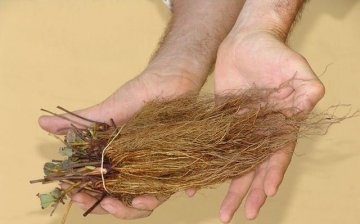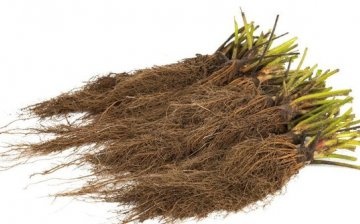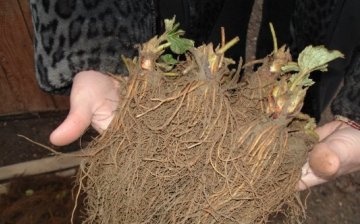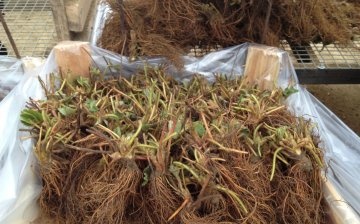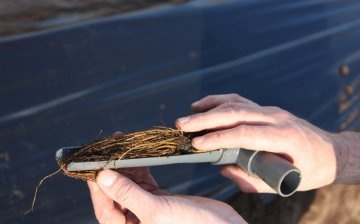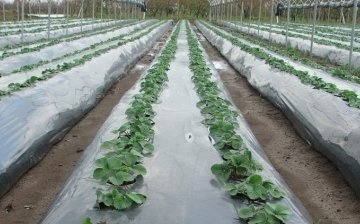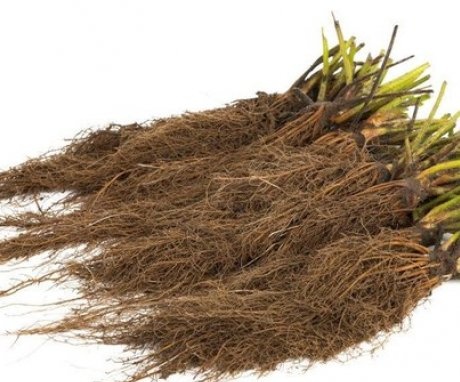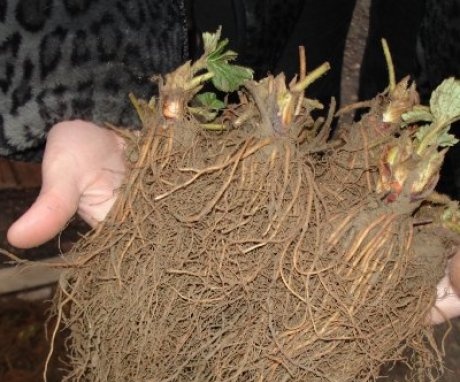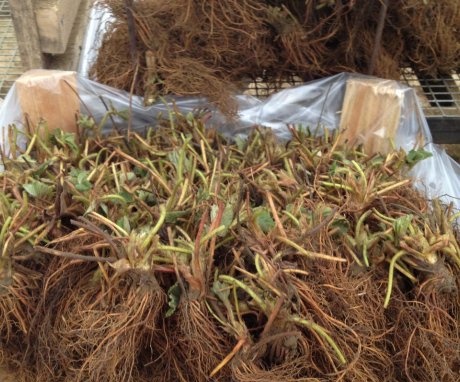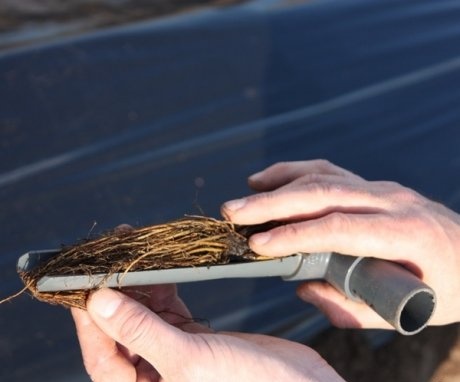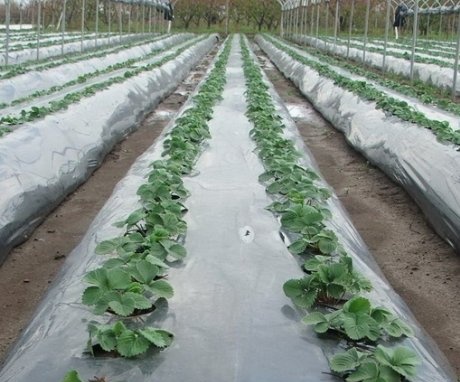Frigo seedlings - from planting to care
New technologies constantly penetrate into all spheres of human activity, including gardening. Not so long ago, we started freezing fresh fruits for the winter. But the freezer, it turns out, can be used not only for storing crops. You can also save seedlings in it. strawberry... It is called frigo.
Content:
- Frigo seedlings: description
- Advantages and disadvantages of frigo seedlings
- Preparing for winter
- Planting frigo seedlings
- Care Tips
Frigo seedlings: description
Frigo seedlings look different from the usual outlets. She has practically no leaves. They are removed before placing them on storage... Indeed, in winter, old strawberry leaves turn black and dry, and young ones remain green under the snow even in frosts. All gardeners know that when transplant In young plants in too hot weather, all the lower leaves must be removed, thus reducing the evaporation surface area.
Having evaluated all these facts and the ability of modern freezers to maintain a constant temperature and humidity, scientists have invented a method of growing strawberry from frigo seedlings.
Frigo seedlings look like a brown root lobe and a neck decorated with rudimentary leaves.
Depending on the diameter of this neck, all frigo seedlings are divided into 4 classes.
- Class B has the thinnest neck, from 0.8 to 1.2 cm. These are rather weak plants, suitable, however, for further cultivation. To make the bush stronger over the summer, its peduncles are constantly removed. Of course, these plants are planted separately in order to be able to carry out this procedure regularly.
- Class A - a little stronger. The thickness of their neck is from 1.2 to 1.5 cm. Such a plant has no more than two flower buds, so the number of berries on a bush reaches 20. From plants of this class, a maximum yield of 4 tons of berries per hectare can be harvested. Given the relatively high cost of frigo seedlings and the need to use fertilizers, means to combat pests and diseases, it is not very profitable.
- Seedlings of class A + with a neck thickness of 1.5 to 1.8 cm have 3 generative buds. Accordingly, there will be up to 3 dozen berries on each bush. The yield per hectare per year of planting reaches 10 tons. Saplings of this class are slightly more expensive than the previous ones. But high profits will allow you to recoup all costs.
- For those who want to get the maximum yield and do not skimp when buying seedlings, it is better to take it of the WB class. In these plants, the diameter of the neck exceeds 2.2 cm. Such seedlings are obtained by special growing of rooted rosettes. They are planted on a new site and create all the conditions for their growth and development. The number of peduncles they have reaches five, and the weight of berries from one bush is 450 g. The yield per hectare reaches 20 tons.
Advantages and disadvantages of frigo seedlings
Benefits of frigo seedlings:
- Frigo seedlings are ahead of the usual in all respects. Plants grown from it have more flower shoots and leaves. They are taller, their leaves are wider.
- Planting seedlings at different times, you can get a harvest all summer strawberry... In this, frigo strawberries differ from remontant strawberries, which give a second crop after a certain time after the first. And there are no berries in between.
- Sturdy root system and the absence of leaves allows the plant to take root quickly.The high temperature during rooting of frigo seedlings does not have a detrimental effect on the plants.
- Seedlings do not freeze in winter in the garden.
- The absence of leaves allows for compact placement of seedlings. As a result, it takes up little space both in the freezer and when transporting planting material.
Disadvantages of frigo seedlings:
- The laborious process of harvesting seedlings makes them expensive.
- For storage plants need to create special conditions. The optimum temperature for frigo seedlings is -1.5 ° C. And the range of permissible temperatures is from 0 to -2 degrees. When the temperature drops to -3 ° C, the plants will die. At above-zero temperatures, they, too, after a while will begin to germinate and become unusable.
- The humidity in the storage chamber should be 90%.
- Hermetic storage packaging must have a certain thickness. Optimal 0.055 mm. If it is thicker, carbon dioxide will not be able to pass through the bag and the plants will not breathe.
- In mid-latitudes, growing frigo seedlings is complicated by the fact that during the short summer, the plants do not have time to grow to the desired state. As a result, sockets have to be dug out in late autumn in bad weather.
Despite these disadvantages, growing frigo seedlings is a profitable business.
Preparing for winter
When determining the timing of harvesting frigo seedlings, one must not be mistaken. If this is done too early, unripe roots will disappear in winter. Better late, but bad weather conditions can make the job very difficult.
It is possible to determine the readiness of the rosettes for wintering intuitively, "by eye" - the roots will melt completely brown.
Only the tips are still white. The leaves darken, change color from rich green to dark, with a raspberry tint. It looks like a plant, ready for laying for winter storage, strong, with a developed root system, a wide neck. The leaves are large, there are several horns.
All shoots and leaves are removed. Only young leaves are left near the growth point. The roots are shaken off the soil, but not washed or pruned (this can lead to decay). The seedlings are laid out by varieties, depending on the thickness of the neck. Plants of each variety are laid out in piles with an equal number of plants (50, 100) and placed in specially prepared bags. The optimum shelf life under these conditions is 9 months. It can stay in the chamber for longer, up to 3 years, but the yield of such bushes decreases sharply.
Planting frigo seedlings
In spring or autumn, they prepare a plot for strawberries. Solanaceae (potatoes, tomato, eggplant). After growing these crops, at least 3 years must pass. Do not use areas in the garden or shade, with high humidity.
Soil preparation and planting of seedlings:
- Consider supplying water to the site for glaze... It will be an irrigation system, or water supply from a well. But the presence of salts should be limited, up to 70 mg / l.
- Take away weeds... If there are a lot of them and they are perennial, you can treat the area with "Roundup". If you are going to use black mulch film, then you do not need to carry out special measures for weed control.
- Fertilize the site, adding about 100 tons of manure per hectare. You can use nitroammophoska (400kg / ha). The soil is loosened to a depth of 1 m.
- You can plant in pre-formed ridges. For planting, you can use the device that comes with the seedlings. It makes the landing faster and better. During planting, weathering and drying of the roots should not be allowed. For this, the planting material is covered with a damp cloth. Make sure that the root does not bend and go down. The horn is placed in the ground up to half.
- Frigo seedlings are planted immediately after thawing or rain. The soil must be moist. The roots are straightened, the mouth is set in the hole so that after sprinkling the growth point is outside. Squeeze the soil around the plant so that there are no voids near the roots.
Water for ten days regularly, preventing the soil around the plants from drying out. Then they switch to the irrigation scheme every 5 days. If it is raining, there is no need to water. You can mulch the soil around the plants. This will keep moisture in.
Each gardener chooses the planting time himself. This can be done from early spring to mid June. You can calculate the planting time so that the berries ripen at a specific time. To do this, you need to subtract two months from the expected fruiting period - for a period up to flowering and ripening of berries.
Care Tips
Care consists in removing weeds, watering and feeding granular complex NPK fertilizer. The first time is brought in after rain or during it one month after planting. Do not allow the accumulation of large amounts of nitrogen in the soil, so as not to provoke the growth of diseases. Foliar top dressing can be carried out throughout the growing season.
In the snowless winter, the plants are covered with straw or other materials at hand. In spring, the aisles are mulched with straw or black foil. They will not only help to retain moisture, but will also help the berries stay clean. It is good to use both of these materials. The film will retain moisture. And the straw will not allow the berries in contact with the film to overheat and deteriorate. Water as the soil dries up. It is especially important to provide plants with the right amount of moisture during the period of fruit ripening.
Plants are treated as needed fungicides and insecticides.
Industrial strawberries in Europe are increasingly grown from frigo seedlings. Especially in Nordic countries such as the UK and the Netherlands. Already 10 weeks after planting class A + frigo seedlings, you can harvest about 12 t / ha. After 3 years, the plants are destroyed, the site is sown with green manure. After 3 years, you can repeat the process.
More information can be found in the video:



